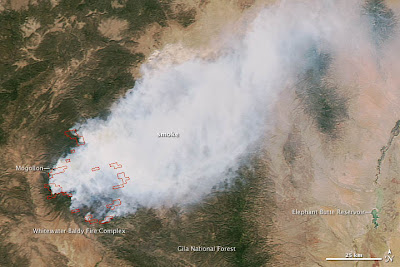Image: A witness in the shopping complex said that he saw green smoke, and soon after that it turned black and very heavy [Al Jazeera]
Dr Ali bin Fetais Al Merri, Qatar’s attorney general, has ordered the detaining of five people associated with the fire at a major shopping mall and entertainment complex in the capital Doha that killed 19 people, including 13 children.
The owners of the Villagio mall and a children's nursery inside it were being detained, state-owned Qatar News Agency said on Tuesday. The mall manager, the assistant manager and the assistant director of security were also being detained as part of the investigation, it said.
Earlier in the day, several hundred people attended a vigil at a park adjacent to the mall. Other memorials were planned at the The Pearl, a property development and on Wednesday at Doha's main church as authorities continued to investigate the cause of the fire.
Children trapped
Monday's incident, in which many of those killed were unable to escape from the nursery, has raised questions about building safety in the Gulf Arab state.
"We're here to support the New Zealand community," Paul Hendra, a New Zealander attending the vigil, told Al Jazeera, referring to one New Zealand family which lost triplets in the fire.
Asked about safety issues, he added: "Of course this is a bit of a worry. The laws don't seem to be adhered to. The laws are there but It's enforcement that is the big problem,"
Another attendee, Michelle Dailley, from the United Kingdom said that most people were still "focused on the tragedy. But I think down the road there will be a lot of concerns about safety".
Initial reports said the fire broke out at or near the Gympanzee child care centre, trapping children and their teachers as the staircase leading to the first-floor nursery had collapsed, possibly due to the heat of the fire.
Dense smoke inside the mall combined with flames and fierce temperatures made reaching the trapped children very difficult, a civil defence representative told a news conference.
"The first report of fire at Villaggio was received by the operations centre at 11:02am (08:02 GMT)," Abdullah bin Nasser Al Thani, state minister for the interior, said, adding that police and civil defence reached the site within minutes, according to the QNA state news agency.
He said it became clear that 20 children were at the nursery and "all efforts were concentrated on evacuating those kids", adding firefighters had to break through the roof to gain access after a staircase collapsed.
"We tried to get to the children area but the extremely high heat stood in our way," Brigadier Hamad al-Duhaimi of the Qatari civil defence said.
The children were from Spain, Japan, South Africa, China, the Philippines and New Zealand. A Spanish diplomatic source in Madrid said that four of the dead children were Spanish.
Yamina Benguigui, the minister in charge of French expatriates, announced in Paris that a French child died, but declined to give any further details.
"It is with great sorrow that I confirm that a French child aged three is among the victims," she said in a statement.
Many expatriates live in Qatar, a gas- and oil-rich Gulf Arab state.
Four teachers and two civil defence officials were among the dead, the interior ministry said.
Another 17 people were injured, including four children, according to authorities. Most of those hurt were rescuers responding to the blaze.
"There don't seem to have been any fire alarms or sprinklers at the mall," a relative of a two-year-old child who died in the fire said, speaking by phone from Doha's Hamad Hospital.
Lack of urgency
Al Jazeera's Tarek Bazley was in the shopping centre with his two children when the fire broke out, but they escaped unharmed.
"The volume of smoke coming out of it, it looked like you had 30 steam trains all pumping their smoke out above it," he said.
But he said there was a lack of urgency from officials in the mall when alarms went off and complained of a "complete lack of planning, a complete lack of co-ordination in terms of removing people from this area."
Local website Doha News posted a note from South African Maryam Charles saying that her daughter, Shameega Charles, 29, who was a teacher at the nursery, "perished in the blaze".
It also said that an 18-month-old South African was among the dead, in addition to a Moroccan firefighter.
In Manila, a foreign department spokesman said three Philippine teachers who worked at the nursery died of smoke inhalation.
"Did this nursery meet the conditions to get a licence?" said Al-Watan daily, addressing its question to the ministry of social affairs.
"We await answers over how it was allowed that kids of such age could be at a place not sufficiently equipped."
Saleh al-Kawari, editor-in-chief of Al-Raya daily, said in an editorial that alleged negligence of safety standards amounted to "premeditated murder", calling the accident "a real catastrophe".
Source:
Al Jazeera and agencies




















